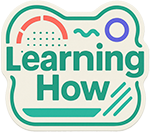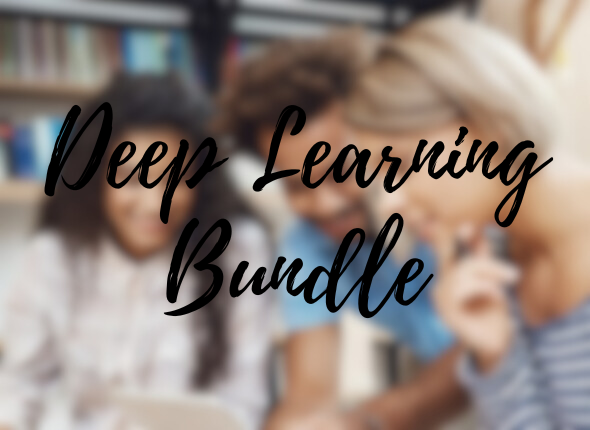Currently Empty: 0,00 €
Deep Learning Bundle: Master Neural Networks, Vision, and Reinforcement Learning
300,00 €
Join the cutting edge of machine intelligence with the Deep Learning Bundle, a technical and project-based curriculum designed for developers, engineers, and researchers. You’ll dive deep into CNNs, RNNs, transformers, and reinforcement learning, learning how to architect systems that power everything from autonomous vehicles to recommendation engines.
Description
Join the cutting edge of machine intelligence with the Deep Learning Bundle, a technical and project-based curriculum designed for developers, engineers, and researchers. You’ll dive deep into CNNs, RNNs, transformers, and reinforcement learning, learning how to architect systems that power everything from autonomous vehicles to recommendation engines.
Includes end-to-end modeling projects, access to GPU environments, and live labs with datasets from real companies. This bundle is your fast lane to deep learning mastery.
Delivery
Courses are instantly available. Includes Colab notebooks, pretrained models, and live QandA sessions.
Refunds
Full refund within 30 days if not satisfied.
Language
English
Curriculum
Lesson 1: Introduction to Deep Learning
Learn the basics of deep learning, including the history, key concepts, and the evolution of neural networks. Understand why deep learning is so transformative in fields like image processing and AI-driven applications.
Lesson 2: Neural Networks Basics: Perceptrons to Multilayer Networks
Dive into the structure of neural networks, starting with the perceptron and progressing to more advanced multilayer architectures. Learn about activation functions and the significance of non-linearities.
Lesson 3: The Mathematics Behind Neural Networks
Understand the mathematical foundation of neural networks, including linear algebra, calculus, and optimization techniques like gradient descent. Learn how these concepts enable training and tuning models.
Lesson 4: Forward and Backpropagation Algorithms
Learn how neural networks compute outputs and adjust weights through forward and backward propagation. Explore backpropagation in detail and its importance in training deep models.
Lesson 5: Implementing Your First Neural Network
Step-by-step guide to coding and building a simple neural network from scratch using Python and NumPy. Learn about layers, neurons, and how to feed data into the network.
Lesson 6: Loss Functions and Optimization Techniques
Explore different loss functions (MSE, Cross-Entropy) and optimization methods (SGD, Adam). Learn how to minimize error and improve the model’s performance through iterative adjustments.
Lesson 7: Introduction to Convolutional Neural Networks (CNNs)
Discover the power of CNNs for computer vision tasks. Learn about convolutional layers, pooling layers, and how CNNs outperform traditional neural networks for image classification.
Lesson 8: Deep CNN Architectures: LeNet, AlexNet, VGG
Explore landmark CNN architectures and their historical significance. Understand how networks like LeNet, AlexNet, and VGG set the foundation for modern deep learning.
Lesson 9: Transfer Learning: Leveraging Pre-trained Models
Learn how to use pre-trained models like ResNet and Inception for faster training. Understand the benefits of transfer learning and how to fine-tune models for new tasks with smaller datasets.
Lesson 10: Data Augmentation Techniques in CNNs
Learn how to artificially expand your training dataset by using data augmentation techniques such as rotation, scaling, and flipping. Improve model generalization and prevent overfitting.
Lesson 11: Object Detection with CNNs: YOLO and SSD
Understand how CNNs are used for real-time object detection. Explore YOLO (You Only Look Once) and SSD (Single Shot Multibox Detector) models and their applications in autonomous driving, security, and more.
Lesson 12: Image Segmentation: Mask R-CNN and U-Net
Learn how to segment images and detect boundaries with Mask R-CNN and U-Net. Understand the difference between object detection and segmentation and its real-world uses.
Lesson 13: Recurrent Neural Networks (RNNs): Sequences and Time Series
Dive into RNNs and their applications in handling sequences of data, such as time series, language processing, and more. Learn the limitations of basic RNNs and how LSTMs and GRUs address them.
Lesson 14: Long Short-Term Memory (LSTM) Networks
Master the LSTM architecture, its gating mechanisms, and its role in remembering long-term dependencies in data sequences. Apply LSTMs in applications like speech recognition and text generation.
Lesson 15: Gated Recurrent Units (GRU) vs. LSTM
Compare and contrast GRUs and LSTMs. Learn how each mechanism handles sequential data and explore use cases where one may be more effective than the other.
Lesson 16: Word Embeddings and Natural Language Processing (NLP)
Learn how to represent words as vectors using embeddings like Word2Vec and GloVe. Understand the role of NLP in sentiment analysis, chatbots, and machine translation.
Lesson 17: Sequence-to-Sequence Models for Translation
Dive into the sequence-to-sequence model architecture. Learn how to implement these models for applications like machine translation, summarization, and question-answering.
Lesson 18: Attention Mechanism and Transformers
Explore how the attention mechanism revolutionized NLP. Learn how transformers, such as BERT and GPT, outperform RNN-based models for language processing tasks.
Lesson 19: Generative Adversarial Networks (GANs): Introduction and Applications
Understand the core principles of GANs. Learn how they consist of two networks—generator and discriminator—and explore their use in generating realistic images, videos, and more.
Lesson 20: Advanced GANs: DCGANs, CycleGANs, and StyleGAN
Explore advanced GAN architectures like DCGAN, CycleGAN, and StyleGAN. Learn their applications in image-to-image translation, style transfer, and synthesizing realistic imagery.
Lesson 21: Reinforcement Learning Basics: Agents, Actions, and Rewards
Learn the fundamentals of reinforcement learning (RL), including agents, actions, rewards, and environments. Understand how RL models are trained to make decisions based on feedback.
Lesson 22: Q-Learning and Temporal Difference Learning
Understand key RL algorithms like Q-learning and temporal difference (TD) learning. Learn how agents can learn optimal actions through trial and error, using the Bellman equation.
Lesson 23: Deep Q-Networks (DQN): Combining CNNs with RL
Discover how deep Q-networks combine CNNs with RL. Learn how DQNs can be applied in complex environments like video games and robotics to improve decision-making over time.
Lesson 24: Policy Gradient Methods in Reinforcement Learning
Explore policy gradient methods for RL. Learn how to train agents using direct optimization of policies and understand techniques like REINFORCE and Proximal Policy Optimization (PPO).
Lesson 25: Actor-Critic Methods in Reinforcement Learning
Dive into actor-critic methods in RL, which combine the strengths of value-based and policy-based approaches. Learn to implement algorithms like A3C and DDPG for continuous action spaces.
Lesson 26: Proximal Policy Optimization (PPO) and Trust Region Methods
Learn PPO and its advantages over traditional RL methods. Understand trust region methods and how they silize training in complex environments.
Lesson 27: Introduction to Self-Driving Car Algorithms
Learn how deep learning and reinforcement learning are applied in autonomous vehicles. Understand the basics of perception, control, and decision-making algorithms in self-driving cars.
Lesson 28: Robotic Control with Deep Learning
Explore the use of deep learning in robotics. Learn how RL and CNNs are applied to train robots for tasks such as navigation, manipulation, and object recognition.
Lesson 29: Advanced Reinforcement Learning: Multi-Agent Systems
Explore multi-agent reinforcement learning, where multiple agents learn and interact in a shared environment. Understand how this is applied in areas like gaming and smart cities.
Lesson 30: Optimization Techniques in Deep Learning
Learn advanced optimization techniques in deep learning, such as gradient clipping, learning rate schedules, and adaptive methods. Improve your model’s performance and speed.
Lesson 31: Hyperparameter Tuning for Deep Learning Models
Understand the importance of hyperparameter tuning and learn techniques like grid search, random search, and Bayesian optimization to fine-tune models for better performance.
Lesson 32: Transfer Learning in Deep Learning
Learn how to leverage pre-trained models for new tasks. Understand how transfer learning helps reduce training time and improve performance, especially in data-limited scenarios.
Lesson 33: Deploying Deep Learning Models in Production
Learn how to deploy deep learning models in production environments. Explore deployment platforms like TensorFlow Serving and cloud services, and learn about model optimization for real-time inference.
Lesson 34: AI Ethics and Responsible AI Practices
Explore the ethical implications of deep learning. Understand fairness, transparency, and accounility in AI, and learn best practices for building responsible AI systems.
Lesson 35: Real-World Applications of Deep Learning
Dive into case studies and real-world applications of deep learning, including healthcare, finance, e-commerce, and entertainment. Learn how deep learning is solving industry-specific problems.
Lesson 36: Capstone Project: Build Your Own Deep Learning Model
In the final project, apply all the concepts you’ve learned to build, train, and deploy a deep learning model. This hands-on experience will solidify your knowledge and showcase your skills to potential employers.
| Lessons | 26 |
|---|---|
| Length | Intermediate |
| Level | Intermediate |





